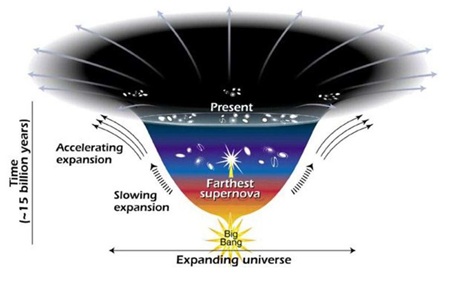Dark Energy
With advanced technologies and newer experiments, scientists have found certain clues about “dark energy”. An international team of researchers made the first putative direct detection of dark energy .
Context
With advanced technologies and newer experiments, scientists have found certain clues about “dark energy”. An international team of researchers made the first putative direct detection of dark energy.
What is Dark Energy?
- Dark energy is the name given to the mysterious force that’s causing the rate of expansion of our universe to accelerate over time, rather than to slow down.
- That’s contrary to what one might expect from a universe that began in a Big Bang.

About the Experiment (XENON1T)
- The experiment named XENON1T, is the world’s most sensitive dark matter experiment.
- It was operated deep underground at the INFN Laboratori Nazionali del Gran Sasso in Italy.
- XENON1T, which is designed to detect dark matter, could also be used to detect dark energy.
- Large-scale experiments like XENON1T have been designed to directly detect dark matter, by searching for signs of dark matter ‘hitting’ ordinary matter, but dark energy is even more elusive.”
Dark matter & Dark energy
- While dark matter attracts and holds galaxies together, dark energy repels and causes the expansion of our universe.
- Despite both components being invisible, a lot more is known about dark matter, since its existence was suggested as early as the 1920s, while dark energy wasn’t discovered until 1998.
Composition of UniverseIn the universe-
|

